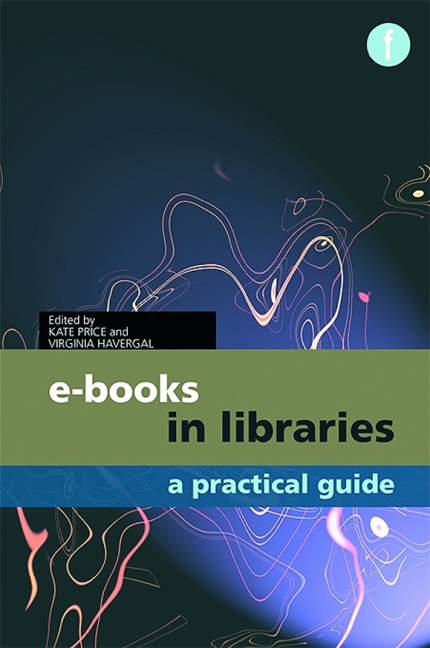Book contents
- Frontmatter
- Contents
- Preface
- The contributors
- Editors’ note
- Introduction
- Part 1 The production and distribution of e-books
- Part 2 Planning and developing an e-book collection
- Part 3 Delivering e-books to library users
- Part 4 Engaging readers with e-books
- Part 5 The future of e-books
- Contributors’ views
- Part 6 Useful information
Contributors’ views
from Part 5 - The future of e-books
Published online by Cambridge University Press: 08 June 2018
- Frontmatter
- Contents
- Preface
- The contributors
- Editors’ note
- Introduction
- Part 1 The production and distribution of e-books
- Part 2 Planning and developing an e-book collection
- Part 3 Delivering e-books to library users
- Part 4 Engaging readers with e-books
- Part 5 The future of e-books
- Contributors’ views
- Part 6 Useful information
Summary
To elicit a range of views on the future of e-books, two questions were asked of contributors:
■ What needs to change before e-books become universally and easily read?
■ What will the e-book landscape look like in ten years’ time?
Without exception, the contributors to this book predict a rapidly increasing uptake of e-books, facilitated by the spread of internet-enabled mobile devices. However, most contributors feel that in order to make e-books a truly universal feature of leisure, study and work, improvements in standardization and usability, combined with an easing of DRM restrictions, are essential.
Chris Armstrong and Ray Lonsdale
To help achieve greater universal use, the range of e-book publishing needs to extend more broadly across the disciplines to ensure an adequate critical mass for academic non-fiction (in particular in the arts and the humanities), general non-fiction and both general and genre fiction. Another area for growth would be in the primary and secondary school sectors, especially for the lower key stages and less academic children. To encourage greater use, there need to be significant improvements in the screen and navigation interface, principally to allow more content to be visible on the screen as well as in catering for users with special needs, such as those with visual impairments or specific learning difficulties. Greater, and perhaps more imaginative, interactive content is required, not only for fiction but for non-fiction, and this will necessitate the development of new authoring skills and possibly a shift in the traditional publisher–author relationship. The development of systematic bibliographic listings for commercial and free e-books will facilitate easier selection and thus easier use. So far as libraries are concerned, one of the major hurdles has been adding e-book MARC records to their catalogues, and publishers must continue to address this.
In ten years’ time, e-books will no longer be the occasionally used exception, but an expected part of book collections in all kinds of libraries, although print will probably still dominate. In this period, too, we can expect to see a greater emphasis on the born digital e-book, offering enhanced interactivity. Users will be considerably more au fait with the format, having acquired familiarity and the fundamental skills to successfully exploit e-book collections.
- Type
- Chapter
- Information
- E-books in LibrariesA practical guide, pp. 255 - 266Publisher: FacetPrint publication year: 2011



